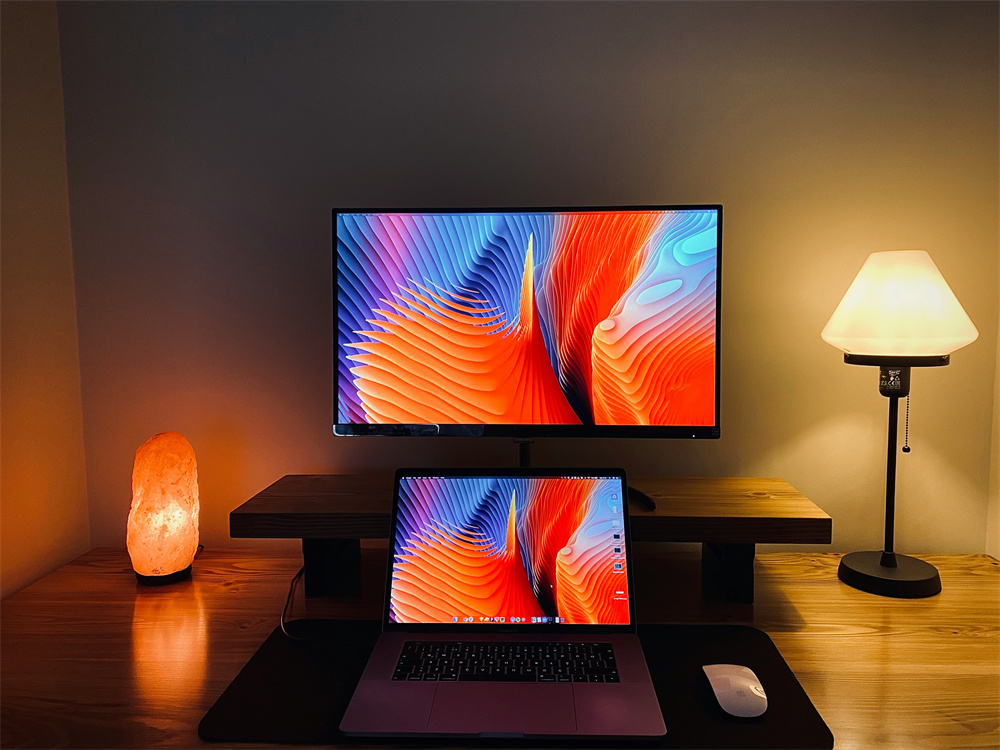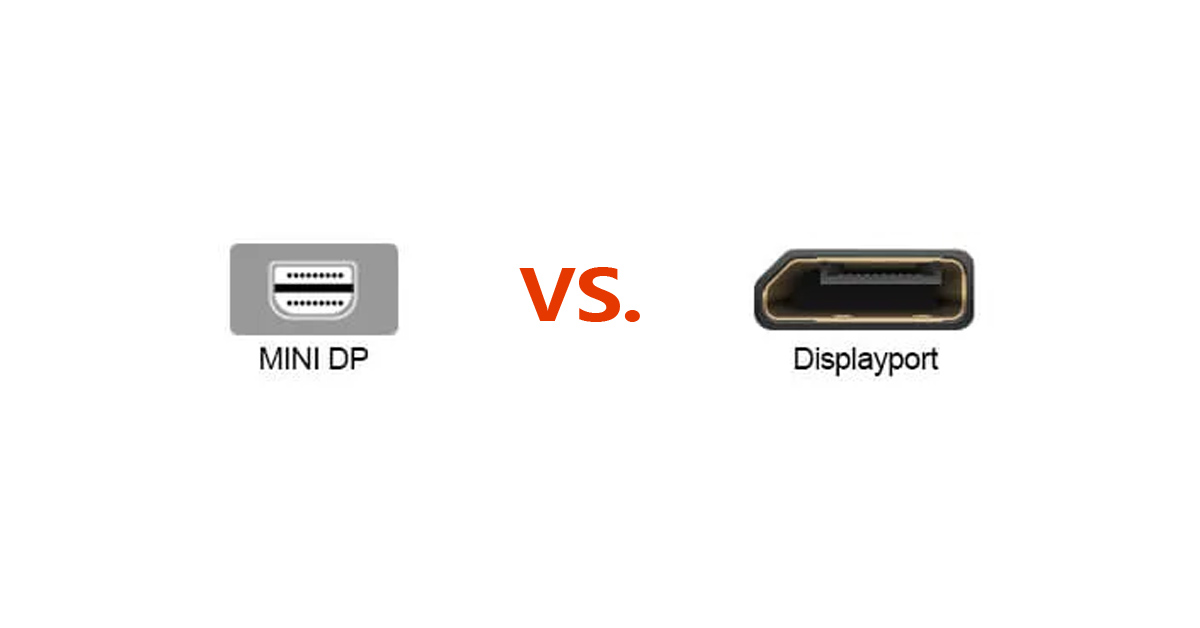In an era of 4K monitors, high-refresh-rate gaming, and portable workstations, choosing the right video interface is critical. DisplayPort (DP) and Mini DisplayPort (Mini DP) are widely used connectors that power modern displays, but their similarities often confuse them. Are they interchangeable? Does size affect performance? Which one suits your needs?
This guide breaks down the technical nuances, use cases, and compatibility factors of DP and Mini DP. Understanding these connectors ensures you maximize your device's potential, whether you’re a gamer, content creator, or casual user.

What is DisplayPort (DP)?
DisplayPort, developed by the Video Electronics Standards Association (VESA), debuted in 2006 as a royalty-free alternative to HDMI and DVI. Designed for high-resolution displays, it quickly became a staple in monitors, GPUs, and laptops due to its versatility and bandwidth capabilities.
Key Technical Specs
Versions: DP 1.2 (2010), DP 1.4 (2016), and DP 2.0 (2019) are the most common.
DP 1.2: Supports 4K at 60Hz, 1080p at 240Hz. Bandwidth: 17.28 Gbps.
DP 1.4: Adds support for 8K at 60Hz and HDR. Bandwidth: 25.92 Gbps.
DP 2.0: Revolutionary 77.4 Gbps bandwidth enables 16K at 60Hz or dual 8K at 120Hz.
DP2.1: Maximum bandwidth up to 80Gbps, supports 4K@240Hz or 8K@60Hz. Transmission modes include UHBR 10, UHBR 13.5 and UHBR 20
Features: Daisy-chaining (connecting multiple monitors via one port), Adaptive Sync for smoother gaming, and support for USB-C via DP Alt Mode.
Common Applications
DP is favored in desktops, gaming monitors, and professional setups requiring high resolutions and multi-monitor configurations. Its robust design also makes it ideal for industrial and commercial displays.
What is Mini DisplayPort (Mini DP)?
Mini DisplayPort is a compact version of DisplayPort, introduced by Apple in 2008. While physically smaller, it retains the same technical capabilities as standard DP.
Technical Specs
Performance: Matches the DP version it adheres to (e.g., Mini DP 1.4 = DP 1.4 specs).
Size: Roughly 30% smaller than DP, with a 20-pin connector.
Devices That Use Mini DP
Mini DP gained popularity in slim devices like Apple MacBooks (2011–2015), Microsoft Surface Pro 3, and Ultrabooks. It’s also used in space-constrained hardware, such as compact GPUs or industrial PCs.

DP vs. Mini DP: Key Differences
Physical Design
DP: Standard-sized connector (16.1mm x 4.8mm) with a latching mechanism for secure attachment.
Mini DP: Compact (7.6mm x 4.8mm), no latch, but easier to plug into thin devices.
Winner: Mini DP for portability; DP for durability.
Compatibility
Adapters: Mini DP can connect to HDMI, DVI, or VGA via adapters without losing quality.
Thunderbolt Confusion: Mini DP shares the same port design as Thunderbolt 1/2 (but not Thunderbolt 3/4). A Thunderbolt port supports Mini DP signals, but not vice versa.
Winner: DP for universal recognition; Mini DP for Thunderbolt flexibility.
Performance
Both deliver identical resolutions, refresh rates, and features if they use the same DP version. A Mini DP 1.4 cable performs as well as a DP 1.4 cable.
Winner: Tie.
Use Cases
DP: Desktops, gaming rigs, multi-monitor offices.
Mini DP: Laptops, tablets, and setups where space is limited.
How to Choose Between DP and Mini DP
Step 1: Check Device Compatibility
Inspect your monitor, laptop, or GPU ports. Older Apple devices often have Mini DP, while modern monitors prioritize standard DP.
Step 2: Prioritize Portability
Travel-Friendly: Mini DP connects ultrabooks to projectors or portable monitors.
Stationary Setups: DP’s secure latch prevents accidental disconnections in permanent installations.
Step 3: Consider Your Setup
USB-C/Thunderbolt 4: Newer devices use USB-C with DP Alt Mode, which can transmit DP signals. Consider a USB-C-to-DP cable instead of a Mini DP if your gear has USB-C.
DP 2.0: For 8K/10K displays, ensure your hardware supports DP 2.0(or more high standard).
Pro Tip: High-quality adapters (e.g., Club3D, Cable Matters) preserve signal integrity when converting Mini DP to HDMI or DP.
Common Myths and FAQs
Myth 1: “Mini DP is the same as Thunderbolt.”
Reality: Mini DP and Thunderbolt 1/2 share the same port, but Thunderbolt supports faster data transfer and PCIe connectivity. A Thunderbolt port can carry a Mini DP signal, but Mini DP can’t handle Thunderbolt’s full capabilities.
Myth 2: “Mini DP can’t handle 4K/8K.”
Reality: Yes, it can! A Mini DP 1.4 cable supports 8K at 60Hz, just like standard DP 1.4.
FAQ: “Are Mini DP adapters reliable?”
Answer: Yes, if you use certified adapters. Cheap adapters may compromise on resolution or refresh rate.
Endnote
DisplayPort and Mini DisplayPort are two sides of the same coin: one prioritizes ruggedness, the other portability. Their identical performance means your choice depends on your device’s ports and use case:
Gamers/Professionals: Stick with standard DP for high-refresh monitors and daisy-chaining.
Frequent Travelers: Opt for Mini DP or transition to USB-C with DP Alt Mode.
Before buying cables or adapters, cross-check your device’s specifications and future needs.
Related Content
DisplayPort 2.1b Unveiled: How DP80LL Cables Revolutionize High-Speed Connectivity
The difference between DP2.1 and DP1.4
Tag:DP,Mini DP




